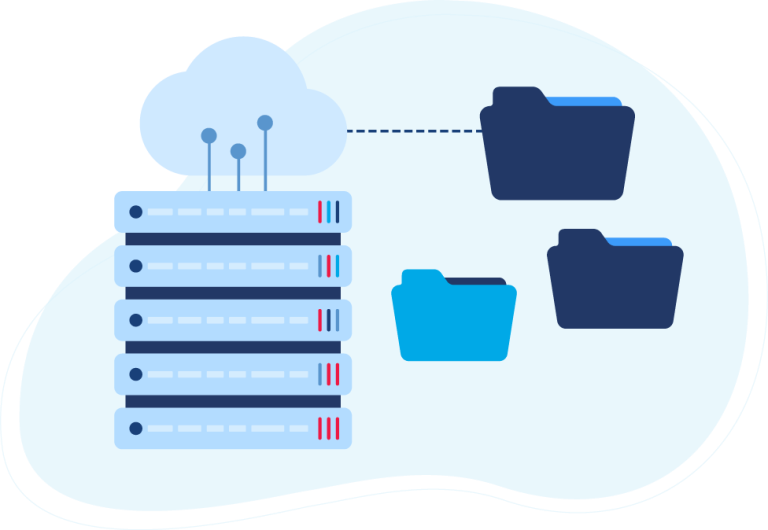The post-Covid eCommerce industry often feels like a different planet. A pandemic has forced Merchants to change at breakneck speeds, and the industry has reached a level of sophistication in two years that once would’ve taken a decade. But now here we are! On the other side of the pandemic and now what?
What are Merchants who have been put through the growth gauntlet worried about? What technology is out there that can help them continue to grow through whatever comes next?
Things have changed, but the fundamentals of eCommerce are still true and they are as important as ever. It is no longer an option for businesses looking to grow in this new era without having a strategic data integration solution. Using data integration experts and having a clear strategic vision is essential to meeting the needs of the widely changing market.
Let’s dive into the top seven data integration best practices you should be implementing, and why strategically integrating your business is absolutely key to maintaining growth through uncertainty.
1. Integration Strategy
Integration as a whole has finally become top of mind for sophisticated businesses. Over the pandemic the costs in time, money, and errors associated with manually entering data out of their eCommerce platform to their applications of choice, became untenable.
“Without addressing increasingly complex integration concerns in a strategic manner, cost and complexity will spiral out of control.” – Gartner
A first best practice is having integration strategies that holistically Consider how data moves throughout a business from order to delivery. When you take a step back and understand how your data moves through our organization, which departments handle it, and for what purpose, you will have a deeper understanding of how your business functions.
After that is understood, the systems and applications you use must be under security, do using those applications help or hinder you in your integration goals? Your chosen applications, platforms, and systems must have modern API’s that are feature-rich. This allows you to integrate into ways that work with your brand DNA, and business rules and can create a better customer experience.
2. In-House vs Managed Service
Merchants often come up against the choice of whether to build integration in-house or use a third-party managed service. On the surface, the integration looks easy, the reality is that the problems most companies want to solve with integration are not simple.
Integration is a specialized business. Because these costs are not factored into the development costs the true amount that needs to be invested is often overlooked by Merchants. Building in-house is certainly an option for some businesses that have the internal technical resources, money, and time to get it right.
Most scaling Merchants in the eCommerce space do not. If an off-the-shelf product can do it, with configuration why build it?
Your second-best practice for data integration is using a managed service solution that is a cost-effective hosted service that can be configured easily and quickly. VL OMNI is a leading provider of fully managed integration services that power eCommerce, B2B, and EDI integrations for unlimited applications. We handle integration projects from initial design and implementation of a solution to maintenance and new partner onboarding.

3. ERP Model vs. Hybrid Model
In the past 3 years, we have seen a shift in different types of integration approaches that are possible based on their ERP and eCommerce platform of choice. Most Merchants today typically fall into two potential approaches, the traditional ERP-Centric Model or the Hybrid-Centric Model.
ERP-Centric Models are predominantly traditional and use ERP as the brand’s central hub, meaning the data center from which all data flows to and from other applications.
There is nothing wrong with this method of data movement, and there are a number of integration solutions that can help.
The Hybrid-Centric Model is slightly different, and it uses a primary eCommerce platform like Shopify as its center of data truth. This is also a perfectly acceptable method of data movement and often makes the most sense to DTC brands. This complicates integration efforts, so it is particularly important to gain a clear understanding of how data flows through the Merchant’s infrastructure and where it needs to reside.
Your third integration best practice is to allow experts like VL OMNI to assist you in figuring out what type of integration strategy is needed based on the chosen model. Our consultation process allows us to identify what the best overall strategy is for the technology stack being used.

4. Upgrading Legacy Systems
Growing Merchants tend to stick with what is working for them. They often follow the “If it ain’t broke, why fix it?” analogy when it comes to legacy systems and applications brought on during the beginning of the business. Legacy systems are often what holds Merchants back in terms of integration.
Depending on the integration needs of your business, they can be limiting, while a tier-one ERP will offer integrated functionality and better APIs that can be applied in more complex and tailored ways.
As eCommerce improves with API capabilities and new methods of integration, those merchants are left behind, beholden to legacy systems that work now, but provide no flexibility for greater strategic development.
The fourth best practice in integration is to make your solutions and applications fit your business needs, not the other way around. Forcing your business to be stuck within the confines of a legacy system, is no way to advance with an integration strategy. Updating legacy systems is a big decision and often a large headache. But ultimately worth it when there is no functional limitation to what your integrations can do within that application as well as how you can integrate across all business systems.
5. Visibility and Scalability
The words “visibility and scalability” are bread-and-butter to the integration world. The best Connectors that automate your workflows across your business will have functionality that allows for visibility and scalability. The fifth integration best practice is to ensure your Connectors have the key functionality that allows them to give you both visibility and scalability.
Integration with visibility allows your entire team sees where your data is moving at all times. Allowing cross-functional team members have access to that integrated data empowers them to know where their orders, products, inventory, etc are in all systems as they are automated. But what visibility’s greatest asset is, is how your team can improve your customer’s experience.
If you have orders that are missing data or information, having visible integrations will allow you to track that data across all applications in your organization. Customers can feel assured they are getting the best customer service because every team has access to the same data.
Scalability is important for growing businesses, especially during times of high demand like during the holiday season. Your website, eCommerce platform, and integrations may not be able to handle the increased volume of orders during these times. Having scalable integrations that stretch and contract with growth allows you to be confident you will hit those peak sales periods with confidence.
6. Multichannel Commerce Everywhere, All Of The Time.
Merchants have learned the hard way during the pandemic that having a consistent experience both in-store and online is crucial. Lockdowns and restrictions forced Merchants to rely on their online sales and needed to focus on bringing that customer experience online. Those who rose to the challenge understood that any interaction a customer has with their brand no matter where it was must be consistent brand experience.
This sounds simple to do, but these Merchants realized it had less to do with website UX and email marketing and more to do with their back-end operational processes. Those who were not integrated properly across all selling channels felt the brunt of operational chaos and their customers felt a massive disconnected customer experience.
The sixth integration best practice is to integrate across all selling channels. Having your customer data flowing consistently to all your applications and channels accurately is what creates the backbone of a great customer experience. VL OMNI focuses on point-to-multipoint data integration. Adding, modifying, or removing any integrations between any applications doesn’t need to be done in a linear function.
The VL OMNI solution enables businesses to automate both the movement of data between applications and the execution of this movement through a single workflow.

7. Strategic Consultation
Your final best practice for data integration is to employ experts to create a strategic consultative plan. Take advantage of our technical expertise by going in-depth in mapping data flows throughout your application stack with your specific business rules in mind. Engage in testing and confirm if internal processes and APIs work before going live with your integration project.
The Benefits of Strategic Consultation
Integration Solution
An integration solution that is tailored to your business requirements taking into account your ERP-centric or Hybrid-centric model.Action Plan
Receive a deeply technical actionable solution and action plan validated against your data and availabilityDefine Your Growth
We help to define your technology stack to ensure you meet your strategic goals, creating a solution for your business around what is possible.
With these seven best practices for data integration, you will be empowered to take on the future of eCommerce. Knowing that your integrations are strategically thought out and a part of your overall business strategy and its goals will improve your growth potential. Your designated workflows will function within with your business rules and you will no longer be beholden to legacy systems or poor functionality in applications that no longer serve you.
Put those best practices into strategy with VL OMNI. We are a managed iPaaS integration platform that can grow with your business over time with our scalable Connectors, especially during peak sales seasons. We configure our connectors to your integration strategy and your business’s specific needs and off long-term strategic guidance on business integration strategy.
 D365 Business Central
D365 Business Central Netsuite
Netsuite


